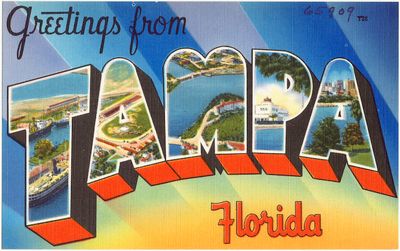What is Kanban?
Most of us use the Kanban development process in our daily work whether we realize it or not. As it relates to development, Kanban leverages a visible project management system so that everyone knows what to do, who is doing it and what tasks have the highest priority. This type of process management was inspired by Toyota and Lean Manufacturing.
The Kanban Board
The tool that the Kanban development process utilizes is the Kanban board.
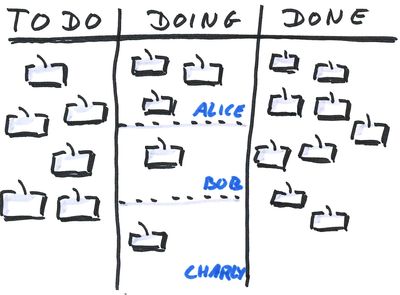
A Kanban board uses swimlanes to quickly show where tasks are in the process and can give the users an idea of how things are progressing. This is a great tool for getting things done at work, but what else can it be used for?
Life Beyond Work
Let’s be honest, who wants to look at this crap after the work day is done though? (Hint: I do!) Kanban boards can be used to help us complete tasks in our personal life as I’m about to show you.
At the time of my writing of this, I am in the process of trying to relocate from rural Alabama to Tampa, Florida (we are a distributed company). My fiancé and I are very busy during the workweek, so it can be hard to put our heads together and plan out what needs to be done to make this move happen.
That is where the Kanban board comes in. I elected to use Trello. It’s user friendly, has a nice app for smartphones and it is FREE.

Of course they have larger accounts for business that have associated costs, but we aren’t talking about business use, are we?
Let me show you what my sweet Kanban board setup looks like.
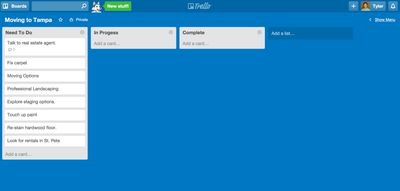
Even though relocating can be a major pain, for this project, all I need are 3 swimlanes. My fiancé can also see this board, and we brainstormed what need to be accomplished in order to move. After we felt good about what needed to be done, we agreed on the sequence that tasks need to be completed to move the ball towards the finish line.
The cards don’t just serve as sticky notes. They can be used for task assignment and to keep information readily available.
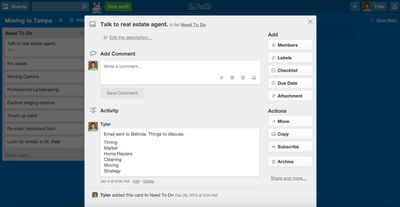
On each card, we can create checklists, due dates, assign tasks, add attachments and write notes. Although I’ll casually tell my fiancé what I’ve done relating to this task, I can add all relevant information so she can view it anytime (as can I when I inevitably forget what I did).
One of the secrets to success on the Kanban board is to manage the workflow by not moving on to the next task until you have finished the most important thing. For example, we have agreed that there is no reason for me to touch up the paint before we move all of our stuff out as we will most likely scuff up the walls during the move. That isn’t to say that my fiancé can’t be gathering info or working on the next thing if we have agreed that I’m taking lead on the first task and the next thing isn’t totally dependent on what I’m working on.
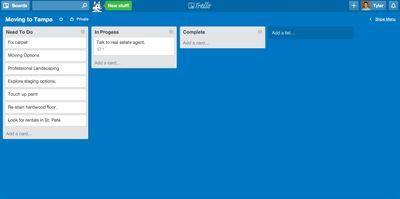
As we complete tasks, they move from the "In Progress" swimlane and to the “Completed” swimlane where the info in the card can be revisited anytime. At that point, the next task moves over into “In Progress” and that task will receive all the focus until it is complete.

I can add new cards and place them in the appropriate sequence as new obstacles are discovered. Let me give you a little peek of what my Kanban board will look like when all is said and done.

I’m a big fan of using Kanban boards for personal use for lots of reasons. It is crazy how keeping a visible, organized list of a project can light a psychological fire and keep you motivated to push towards your goal. There is something strangely satisfying in moving a card over into "Complete" and washing your hands of it forever.
If you haven’t ever used a Kanban board before in your business or personal life, I hope this has inspired you to give it a try. I think you’ll like the results.
